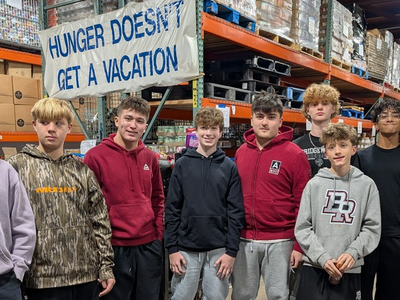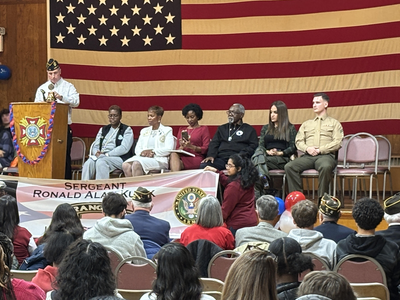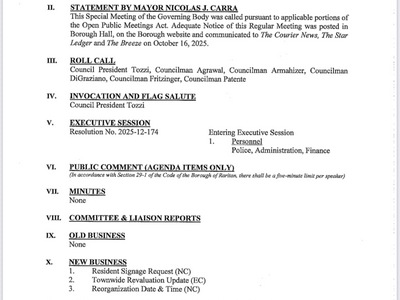USDA Announces Sweeping Plans to Protect the United States from New World Screwworm
New World Screwworm (NWS), Cochliomyia hominivorax, is a parasitic fly that lays eggs in and on open wounds and mucous membranes of warm-blooded animals. NWS larvae (maggots) burrow into the flesh of these animals and eat healthy living tissue. This infestation with larvae is called myiasis. NWS can infest livestock, pets, wildlife, occasionally birds, and in rare cases, people. The damage caused by NWS in animals can be serious and is often deadly to the animal.

NWS has been largely eradicated in the United States for over 50 years, but a current outbreak in Central America and Mexico is moving closer to the U.S. The FDA’s Center for Veterinary Medicine (CVM) is working closely with the U.S. Department of Agriculture (USDA), the Environmental Protection Agency (EPA), other U.S. government departments and agencies, and state animal health officials to monitor the threat of NWS and prepare for its potential arrival in the U.S.
Currently, there are no animal drugs approved by the FDA for the treatment or prevention of NWS myiasis in animals. CVM is working with drug sponsors, federal and state partners, and international regulators to understand options for U.S. veterinarians to treat NWS effectively and safely. The agency has multiple regulatory pathways under which it could review and authorize animal drugs for NWS. To learn more about FDA’s pathways, see: FDA Regulation of Animal Drugs.
________
Frequently Asked Questions (FAQs)
- What role does the FDA’s Center for Veterinary Medicine play in the preparedness and response efforts for NWS?
CVM’s role is to review data and information submitted by animal drug sponsors to support the safe and effective use of drugs to treat or prevent NWS myiasis in animals, including food-producing animals, companion animals, and wildlife.
CVM is working in collaboration with the USDA, which is spearheading the nationwide response to NWS, on developing prevention and treatment strategies for NWS myiasis in animals. Additionally, CVM is coordinating with the Environmental Protection Agency (EPA), which regulates subsets of certain over-the-counter topical antiparasitic products and insecticides as pesticides, to understand potential EPA-regulated products that may be part of a prevention and treatment strategy.
- What mechanisms are available to provide for the use of drugs to prevent or treat NWS myiasis in animals?
FDA approval, supplemental approval, conditional approval, extra-label use and emergency use authorization are all mechanisms by which animal drugs could be made available for use to prevent or treat NWS myiasis. The appropriate mechanism(s) for each drug would depend on factors such as current U.S. approval status, which animal species the drug treats, and data and information submitted for FDA review by a sponsor. It is likely that multiple regulatory mechanisms will be needed to ensure that there are appropriate options available to meet the needs of veterinarians, animal producers and pet owners.
For example, FDA approval or supplemental approval are typical mechanisms by which animal drugs can be reviewed and brought to market. However, the time needed for sponsors to generate the necessary data in support of drug applications, and for FDA to review these applications, may not be compatible with the urgent nature of the NWS public health threat. Therefore, these typical approval mechanisms alone may not meet all needs. For more detail regarding some of these mechanisms, see: FDA Regulation of Animal Drugs.
- Can FDA approved products be used extra-label for NWS myiasis?
Veterinarians may prescribe the use of FDA-approved products for uses that are not on the label, in accordance with the existing regulations (21 CFR Part 530) with a valid veterinary/client/patient relationship.
CVM encourages veterinarians to review existing regulations regarding the extra-label use of animal drugs. It is particularly important for food animal veterinarians to be aware of the additional requirements for extra-label use in food-producing animals including rules against extra-label use of drugs administered as medicated feed. A helpful reference tool is: The Ins and Outs of Extra-Label Drug Use in Animals: A Resource for Veterinarians.
On New World Screwworm: Information for Veterinarians, CVM provides information to support veterinarians with the identification of FDA-approved animal drugs labeled for indications other than NWS myiasis that scientific literature indicates may be effective to prevent or treat NWS myiasis.
- What products may be approved or authorized by CVM for NWS in animals?
CVM is committed to ensuring that animal prevention and treatment options are available to protect the health and safety of livestock, pets, and humans; to ensuring that food from any treated animals will be safe for consumers; and to considering important short- and long-term goals – including continued effectiveness of and potential resistance to different treatment options.
CVM is open to considering therapeutics with scientific evidence indicating safety and effectiveness for the prevention and treatment of NWS myiasis.
While we cannot discuss any drug product or application under consideration, CVM encourages animal drug sponsors to contact us about potential treatments, scientific research, and regulatory pathways.
__________________________________________
More News from Hillsborough
- RVCC Holiday Art Show, Sale to Feature Ceramics, Handmade Jewelry, and Artwork The exhibition and sale will feature a varied display of work created by RVCC students, instructors, and several alumni.
- New Jersey American Water’s Water UP! Graduates Ready to Keep the State’s Water Workforce Flowing “Water UP! is launching these graduates into meaningful careers.










